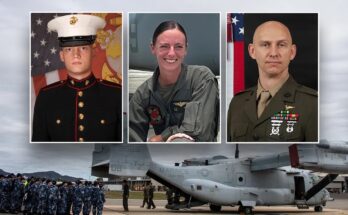
Firefighting Helicopter Crashes in Uiseong, Killing Pilot on Duty
A firefighting helicopter tragically crashed in Uiseong, Gyeongbuk Province, while on a mission to combat a wildfire, claiming the life of the pilot. The incident has once again highlighted the dangers faced by emergency responders who risk their lives to protect communities from natural disasters.
The Incident: What Happened?
The helicopter was deployed to fight a wildfire spreading across the forests of Uiseong. As part of the mission, it was carrying water to douse the flames when it suddenly lost control and crashed into a remote area. Emergency response teams rushed to the crash site, but tragically, the pilot did not survive.

Authorities are investigating the exact cause of the crash. While initial reports suggest a possible mechanical failure or challenging weather conditions, a full inquiry will determine the factors that led to the tragic accident.
The Risks of Aerial Firefighting
Firefighting helicopters play a crucial role in controlling wildfires, particularly in areas that are difficult to reach by ground crews. Pilots maneuver through dangerous conditions, including low visibility due to smoke, unpredictable winds, and extreme heat. The risks involved in these missions are significant, as pilots must fly at low altitudes while carrying heavy loads of water.

Investigation and Safety Measures
Authorities are examining multiple factors that may have contributed to the crash, including:
1. Mechanical Failure – Helicopters endure extreme stress during firefighting missions, and any failure in the engine or rotor system could lead to a loss of control.
2. Weather Conditions – Strong winds, turbulence, and poor visibility from thick smoke can make flying extremely hazardous.
3. Pilot Fatigue and Workload – Firefighting pilots often work long hours under intense pressure, which could impact reaction times and decision-making.
The investigation will provide insights into whether safety measures need to be improved to prevent similar tragedies in the future.

Honoring the Fallen Pilot
The pilot, whose identity was not immediately released, was a dedicated professional who put their life on the line to protect others. Tributes poured in from fellow firefighters, emergency responders, and the public, recognizing their bravery and sacrifice.
A memorial service is expected to be held in honor of the fallen pilot, with officials reaffirming their commitment to enhancing the safety of firefighting personnel.
Conclusion
The tragic crash of the firefighting helicopter in Uiseong is a solemn reminder of the risks faced by those who battle wildfires from the air. As investigations continue, authorities must work to strengthen safety measures, ensuring that pilots have the best possible equipment and support to carry out their life-saving missions.
Despite the dangers, aerial firefighters remain committed to their duty, protecting lives, homes, and forests from devastating wildfires. The fallen pilot’s courage and dedication will not be forgotten.



